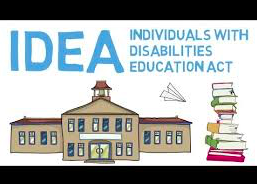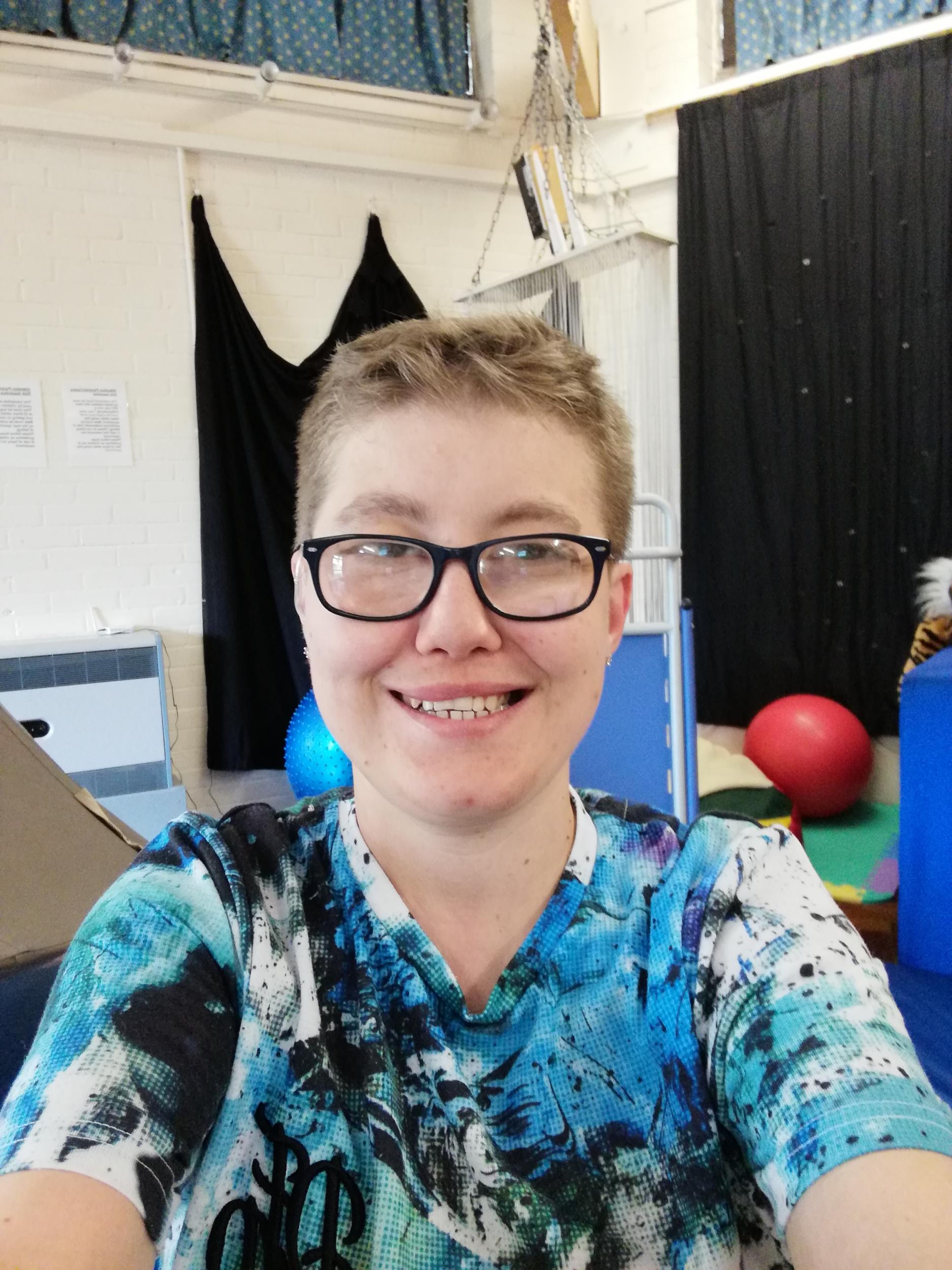![Ashland-Amtrak--700x467[1]](https://rmcreadingdisability.files.wordpress.com/2018/11/ashland-amtrak-700x4671.jpg?w=739) I took the train to travel home to Connecticut for Thanksgiving this year. On the return leg of my trip, I was standing on the platform with my mom waiting for the train to arrive. As the train approached, it slowed down enough for the conductor to speak to the large crowd of people huddled on the narrow platform. He was telling us that the train would make two stops: the first stop to board a disabled person and the second to board everyone else. The second conductor at the back of the train was unaware of what was going to happen and became agitated with the first conductor. Upon enlightenment of the events coming in the next few minutes, the second conductor rolled her eyes and it was written all over her face that she was irritated that there was an extra stop just to accommodate someone with a disability, a service that Amtrak is supposed to happily provide. When the train made its first stop for the disabled person, there seemed to be no one present that needed boarding accommodations. When the second conductor yelled out, “Where’s the person? Who did we even do this for?” a woman appeared from the crowd. My mom said, without thinking anything of it, “She doesn’t look disabled.”
I took the train to travel home to Connecticut for Thanksgiving this year. On the return leg of my trip, I was standing on the platform with my mom waiting for the train to arrive. As the train approached, it slowed down enough for the conductor to speak to the large crowd of people huddled on the narrow platform. He was telling us that the train would make two stops: the first stop to board a disabled person and the second to board everyone else. The second conductor at the back of the train was unaware of what was going to happen and became agitated with the first conductor. Upon enlightenment of the events coming in the next few minutes, the second conductor rolled her eyes and it was written all over her face that she was irritated that there was an extra stop just to accommodate someone with a disability, a service that Amtrak is supposed to happily provide. When the train made its first stop for the disabled person, there seemed to be no one present that needed boarding accommodations. When the second conductor yelled out, “Where’s the person? Who did we even do this for?” a woman appeared from the crowd. My mom said, without thinking anything of it, “She doesn’t look disabled.”
With my new awareness of disability, I thought about these two things and realized society is like a train. Our society is based on efficiency, punctuality, and in general, time; society is focused on speed; how fast we can complete things and even how fast we develop as people. Very similar to a train which waits for no one, our able-bodied and able-minded society is reluctant to wait for anyone. This shows how our society associates disability with slowness and delay. To that train conductor, setting aside time to make an accommodation for a person with disabilities was a hassle and time-consuming, and would ultimately delay the train. This also brings up the concept of social spaces; boarding a train in a limited amount of time was not designed for any person with disabilities; Amtrak assumes the accessibility of its passengers and does not train its employees well enough to be considerate, patient, and accommodating to all passengers.
The second thing that I thought about was my mom’s comment of how the woman did not look as if she was disabled. I know she didn’t mean anything negative by it, I used to think in this way before taking this class too. Our society defines disability by what we determine as failure to meet the normal range of the physical and mental ability of most people. For many of us, we look immediately for severe external markers of disability, the physical abnormalities that would require assistance to board a train for example. People, such as my mom, looked at the woman and at first glance assumed her efficiency and ability based solely on external appearance. Yet from taking this class, I have been exposed to the fact that there are many diverse levels of physical and cognitive ability. There is not only an ultimatum of abled and disabled, there is a whole spectrum for ability in between. I have no idea what accommodations the woman needed to board the train, but I know that many people, including the second conductor, questioned her legitimacy because there were no outstanding signals that she had a disability. She looked as if she was within the normal speed of abled people, when in fact, the woman could have had a physical impairment invisible to the amateur eye or a cognitive impairment that required special assistance.
Upon further online research, I found that other people have noticed Amtrak’s failure to accommodate passengers; people agree that Amtrak is less than welcoming to passengers with disabilities. Mainly Amtrak is being called out for failure to provide well-accessible restrooms on board the trains, platforms that are level with trains, and ramps. The National Disability Rights Network (NDRN) has been speaking out against Amtrak:
“Our reviews show that Amtrak’s negligence goes beyond simply ignoring the Americans with Disabilities Act, but demonstrates a deliberate disregard for passengers with disabilities,” said Curt Decker, executive director of NDRN. “If you are a person with a disability who wishes to travel on Amtrak, the message is pretty clear: you are not welcome here.”
Additionally, the NDRN reveals that
“Congress recognized [Amtrak’s failure to accommodate passengers with disabilities] upon the passing of the ADA and gave Amtrak 20 years to come into ADA compliance. This plan would allow joint owners of stations, who are also responsible to meet ADA regulations, the opportunity to share costs. However, Amtrak did not meet this 2010 deadline. Furthermore, Congress gave Amtrak funds directed at accessibility improvements when recognizing that ADA compliance would not be possible by 2010, yet we still see a failure to make necessary accommodations for people with disabilities.”
I did not realize the extent to which Amtrak fails to accommodate disability when I witnessed the exchange between conductors and passengers on my return trip. In addition to the lack of physical accommodations in Amtrak train stations, I want to point out that their staff also does not give the same customer service to passengers with disabilities as they do to abled passengers. Trains represent how our society thinks about disability; slow and delayed, unable to catch up, and unable to keep up with the normal speed of the abled. To combat this, Amtrak needs to come to full compliance with the ADA like they were supposed to 20 years ago, they need to create transportation that is universally designed for everyone. Transportation is such a crucial part of our society, we are always moving. For people that are not able to use this main form of transportation, they are excluded from the normal pace of society. We need to think about efficiency of the entire group of people instead of every man for themselves. Additionally, I want to stress is that the employees of Amtrak need to be respectful and patient with all passengers, no matter their ability. Currently, it is not Amtrak’s pleasure to accommodate.
Opinion of the National Disability Rights Network: http://www.advocacymonitor.com/is-amtrak-really-an-option-for-people-with-disabilities/
Amtrak’s Disability Policy: https://www.amtrakoig.gov/sites/default/files/reports/ada_final_report_1006.pdf
Image: https://www.onlyinyourstate.com/virginia/trains-va/
Note: Ashland train station is an example of Amtrak’s inaccessible stations.


![IMG_3269[1]](https://rmcreadingdisability.files.wordpress.com/2018/11/img_326911.png?w=433&h=770)

![Ashland-Amtrak--700x467[1]](https://rmcreadingdisability.files.wordpress.com/2018/11/ashland-amtrak-700x4671.jpg?w=739)